10 years of impact: global food security
How has research at the Earlham Institute impacted on global food security over the last ten years, and what is the value to the global economy in the future?
How has research at the Earlham Institute impacted on global food security over the last ten years, and what is the value to the global economy in the future?
One of the most important questions that has perpetually faced humanity since we founded the first cities: how do we produce enough food?
The 21st century version of this question is not a simple matter against a backdrop of climate change and skyrocketing populations in some of the world’s poorest regions, including vast tracts of sub-Saharan Africa, where the effects of global warming will likely exacerbate existing problems such as malnutrition and poor socioeconomic development.
Earlham Institute has been at the heart of projects aiming to tackle these issues through leading genomics and bioinformatics, with stand out examples being our contribution to sequencing and annotating the wheat genome and the sustainable development of aquaculture in East Africa.
We commissioned a report to look into the impacts of our research (Brookdale Consulting), which highlighted how valuable our research has been and will continue to be for the global economy over the next 25 years.

Bread, pasta, noodles, Weetabix: wheat is a ubiquitous crop that provides almost one third of global calories. Improving its production and nutritional value is therefore crucial, while we must also equip this highly complex crop with the genetic armoury to withstand emerging pests and diseases, which are spreading more rapidly to new areas as the climate rapidly changes around us.
At both UK and global level, EI’s work is supporting ongoing annual increases in wheat productivity and reduced impact of disease outbreaks. As such, EI’s impact is estimated at £63m to the UK economy and £2.7bn to the rest of the world over the next 25 years. EI’s work is already being used by plant biotechnology companies, wheat breeders and wheat researchers, forming the basis for international breeding programmes.
This should come as no surprise considering the huge importance of wheat to the global economy and food security, with 760 million tonnes produced globally in 2017. The value of wheat to the UK economy is considerable, with farm gate turnover in 2016 reaching £1.63bn for a crop grown over 1,823,000 hectares.

EI’s impact is estimated at £63m to the UK economy and £2.7bn to the rest of the world over the next 25 years.

EI was instrumental in the assembly and annotation of the bread wheat genome as part of the International Wheat Genome Sequencing Consortium (IWGS), providing the first ever almost-complete sequence for a crop with complicated genetics - its genome being a hard-to-decipher hexaploid mixture of three different grasses rolled into one. The KAT tool generated by the Clavijo group at EI has helped other global wheat genome sequencing efforts, while other tools developed in the Swarbreck Group at EI, including Mikado and Portcullis, enabled the recent IWGS annotation.
The bread wheat genome has become a vital tool for UK and international wheat breeders and is already impacting on yield and quality of commercial varieties. EI is one of eight institutions in the Designing Future Wheat (DFW) Programme, which aims to help plant breeders to develop new wheat varieties.
For example, EI has identified 34 mutant lines with enhanced resistance to yellow rust, a UK priority disease of wheat. We are involved in generating next generation platforms that can help to identify genes of interest in just a couple of months, rather than several years. These genes might be harnessed by breeders to increase grain size, or perhaps to alter circadian clock genes so that plants might adapt more readily to some of the more extreme effects of climate change.
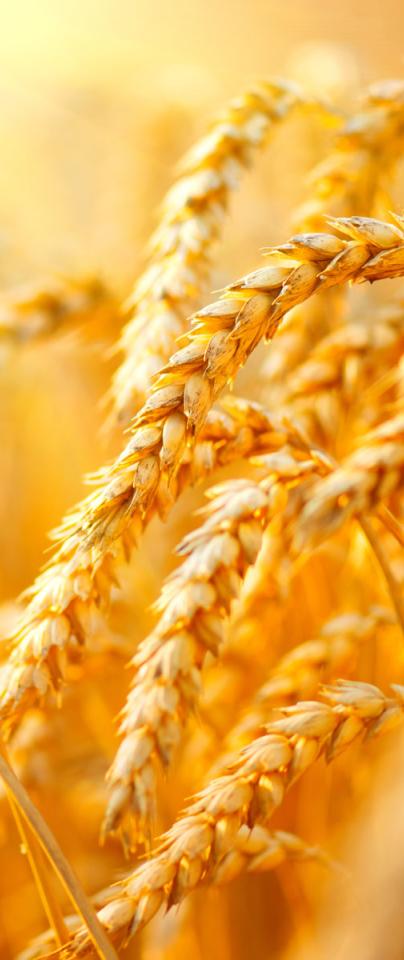

EI is one of eight institutions in the Designing Future Wheat (DFW) Programme, which aims to help plant breeders to develop new wheat varieties.

It’s not just wheat that we’re interested in at EI, however. Thanks to our expertise in understanding the very complex genome of wheat, our scientists are helping to develop better tools to understand even more difficult-to-decipher genomes. Strawberries, for example, can be octoploid or even decaploid, and a new tool being developed by the Clavijo Group is helping us to produce a high quality genome sequence for the most popular global commercial variety.
Other work is being carried out in understanding the evolution of the diseases of sugar beet, or in determining how to best harvest lettuce.
We are also at the forefront in implementing Internet of Things (IoT) technologies and their applications in plant phenotyping. CropQuantTM provides an automated and cost-effective crop monitoring and analysis platform for breeding, farming and crop research. SeedGermTM can routinely screen commercial seed lots enabling quantification of seed germination frequency and seed vigour, which can be used by seed companies, growers, insurance companies, or regulatory agencies to ensure the quality of seeds. AirSurfTM is a cost-effective and automated field surveillance software solution to enable large-scale crop monitoring and trait analysis based on data captured by UAVs and light aircraft. Correlating in-field remote sensors such as CropQuantTM with aerial imaging can cross-validate crop health and impacts of environmental stresses (e.g. water, heat) with increased confidence.
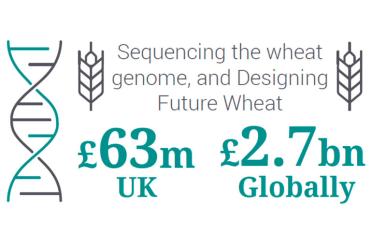
Another area important for 21st century food security is fish farming, and EI has been part of setting up a National Aquaculture Development Centre in Tanzania with the aim of doubling aquaculture production by 2025. A key challenge is to improve the productivity and resilience of tilapia, which has the potential to be an affordable source of protein.
Tilapia is now a $7.6bn industry globally: fish can be farmed sustainably since they feed on vegetable matter and grow quickly in a wide variety of conditions. In Tanzania, however, practices have been lagging behind in terms of their sustainability and development, particularly as introduced varieties of fish have been able to escape and breed with native fish (therefore becoming invasive), both negatively affecting local fish biodiversity and reducing the potential productivity of fish farms.
Yet, there is huge potential in the lakes of Tanzania. Most tilapia production is based on a handful of strains, such as the Nile tilapia, but there are more than 50 wild species throughout Africa which could harbour valuable genes for fast growth, disease resistance and salt tolerance, to name but a few.
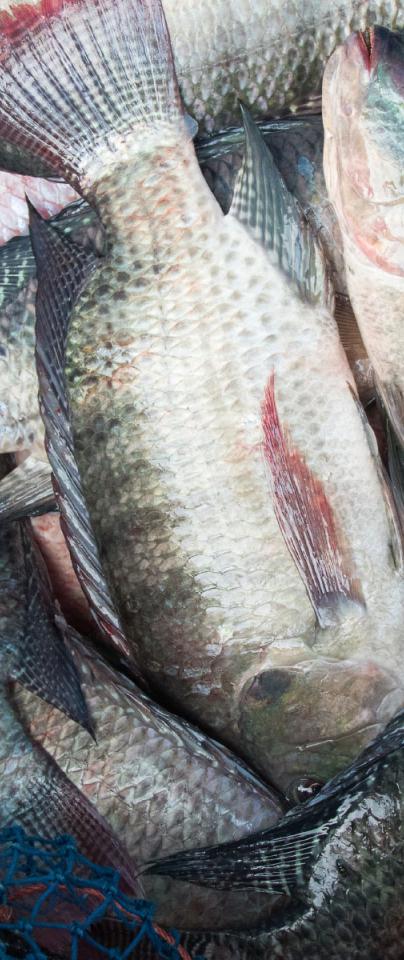

Another area important for 21st century food security is fish farming, and EI has been part of setting up a National Aquaculture Development Centre in Tanzania with the aim of doubling aquaculture production by 2025.

Investigating the genetic diversity and physiological adaptations of these wild tilapia could help to safeguard the biodiversity of this economically important group of species but also allow the discovery of traits useful for productivity improvement of the existing farmed strains.
To support this, EI and Bangor University are developing a smartphone app, TilapiaMap, which will match pictures taken in the field with an online database, helping to identify native strains endangered by introduction of exotic fish species and will feed into recommendations about their in-situ conservation, pond culture and restocking.
EI is also working with WorldFish (an international research organisation that harnesses fisheries & aquaculture to reduce hunger and poverty) to identify genes that are associated with the faster growth in order to help breed genetically improved Nile tilapia that are more adaptable to local conditions.
Importantly, these projects must themselves be sustainable, and EI’s work will enhance capacity in research and identification of strains of tilapia within Tanzania, through participation of local staff and research students in fieldwork and workshops and through preparation of a field guide to the tilapias of Tanzania.
This work could be worth an additional $12.4m to the tilapia economy of Tanzania and Malawi (estimated at just over $23m in 2015), but more importantly has the potential to improve food security for some of the world’s poorest whilst preserving natural biodiversity. EI’s impact is estimated to be £612m over the next 25 years.
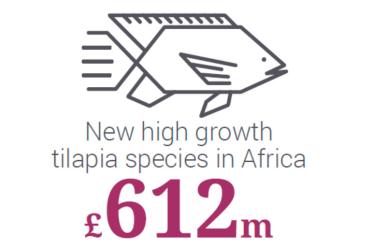
Earlham Institute’s projects in food security are far ranging and we continue to develop the best tools for the computational analysis of complex genomes which will allow us to tackle an increasing range of genomes important for food security.
Besides wheat, we study the pests and pathogens of other commercially important crops: from green peach aphids to sugar beet rust. Our increasing capacity for synthetic biology, including the establishment of a high throughput DNA Foundry, will see our impact on food security further increase in years to come.
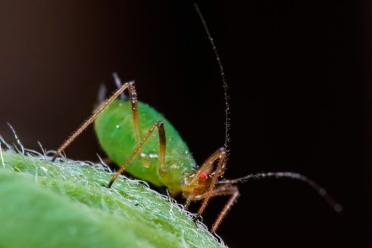
Investigating the genetic diversity and physiological adaptations of these wild tilapia could help to safeguard the biodiversity of this economically important group of species but also allow the discovery of traits useful for productivity improvement of the existing farmed strains.
To support this, EI and Bangor University are developing a smartphone app, TilapiaMap, which will match pictures taken in the field with an online database, helping to identify native strains endangered by introduction of exotic fish species and will feed into recommendations about their in-situ conservation, pond culture and restocking.
EI is also working with WorldFish (an international research organisation that harnesses fisheries & aquaculture to reduce hunger and poverty) to identify genes that are associated with the faster growth in order to help breed genetically improved Nile tilapia that are more adaptable to local conditions.
Importantly, these projects must themselves be sustainable, and EI’s work will enhance capacity in research and identification of strains of tilapia within Tanzania, through participation of local staff and research students in fieldwork and workshops and through preparation of a field guide to the tilapias of Tanzania.
This work could be worth an additional $12.4m to the tilapia economy of Tanzania and Malawi (estimated at just over $23m in 2015), but more importantly has the potential to improve food security for some of the world’s poorest whilst preserving natural biodiversity. EI’s impact is estimated to be £612m over the next 25 years.
Earlham Institute receives funding from the Biotechnology and Biological Sciences Research Council (BBSRC) to provide National Capabilities and to deliver Strategic Programmes.

A dedicated, high-throughput genomics facility is out of the reach of most organisations due to the large capital investment and the requirement for skilled, multidisciplinary staff. Small-scale investment in genomics platforms in an institute or research group cannot deliver UK research ambition for high-throughput, massive-scale studies on single-cell systems or populations.
The National Capability in Genomics and Single Cell analysis delivers a cost-effective facility to assay genomic diversity, while extending this with a critical national research capability in high-throughput, multiomic, single-cell analysis and addressing a very current need.
This National Capability will continue to provide researchers with access to new technologies, bespoke bioinformatics and high-throughput lab pipelines with a focus on crop, microbial and non-model animal genomics, delivering a strong scientific impact and strategic importance in the area of agri-science, in particular.
The complementary genomics platforms and expertise of the EI Science Division supports this National Capability to address complex genomics questions in agriculture and food security. Closer links to the Norfolk and Norwich University Hospital and Quadram Institute will transition this expertise to bioscience for health, particularly in microbiome studies of health and nutrition.
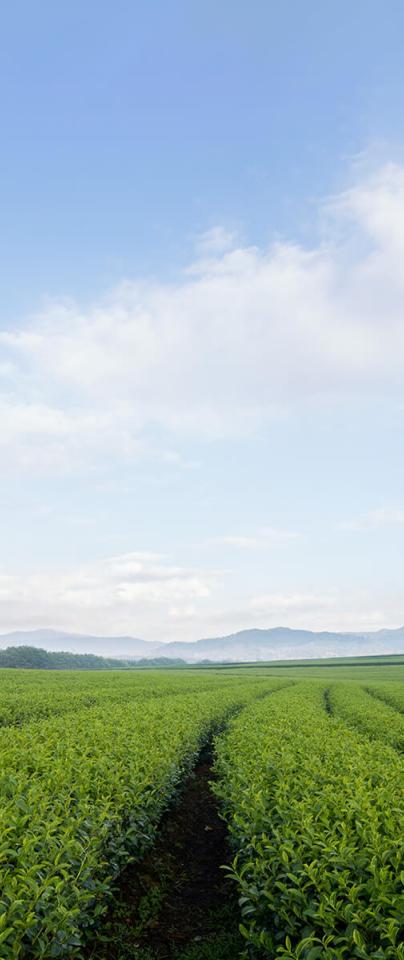
Understanding how living systems work, across interactions at the micro and macro level, is crucial for a deeper understanding of the biology of organisms. We will deliver impact across food security and sustainability through the development of predictive and testable models in economically important organisms. Industries our work will support include aquaculture, plant biotechnology and pharma. Our work will be made available to the wider research community through publications and open data resources to maximise knowledge exchange opportunities.